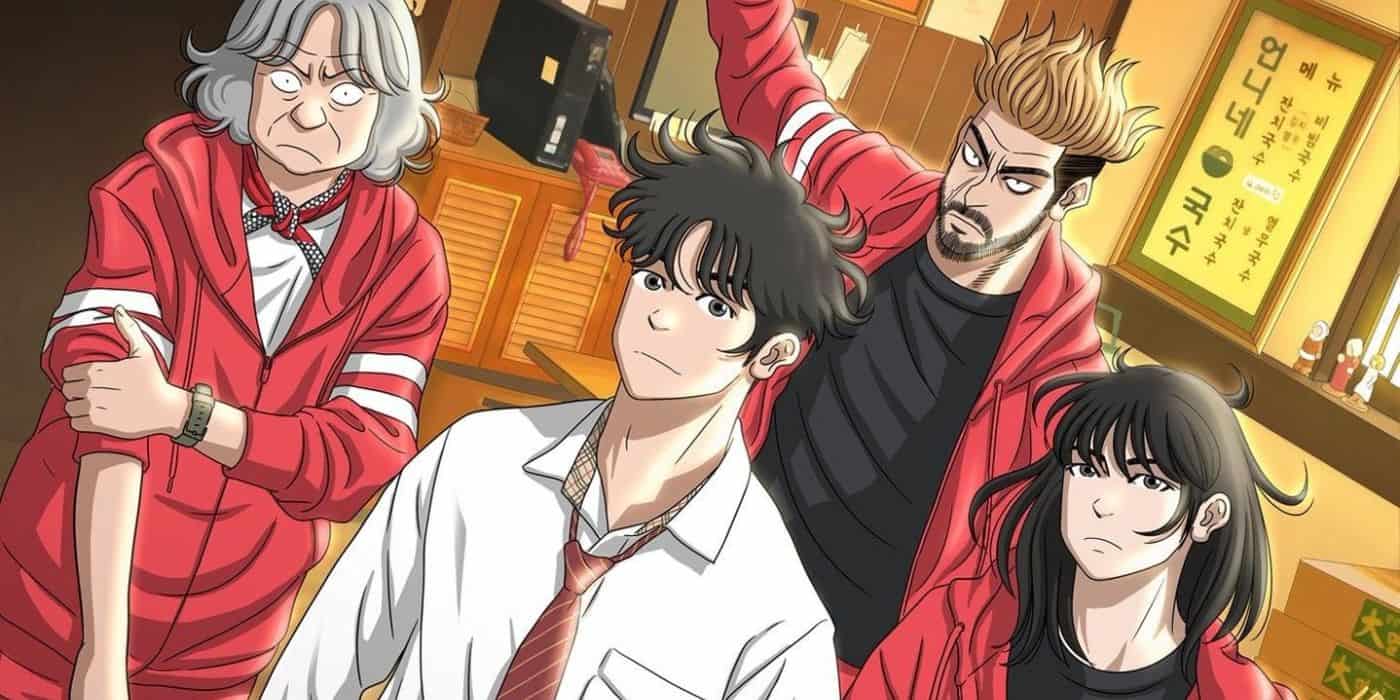Lupin the Third has endured to become one of the most recognizable franchises to come out of Japan. With new interpretations of the manga by the late Kazuhiko Kato (aka Monkey Punch) continuing to emerge, the cheeky thief and his band of cunning acquaintances, hasn't waned in popularity. However, one of the most experimental Lupin series to be produced in recent years focuses on one of his ever-present yet most enigmatic allies – Fujiko Mine. The femme fatale takes center stage in Sayo Yamamoto's 2012 series, “Lupin the Third: The Woman Called Fujiko Mine”.
Buy This Title
on Amazon by clicking on the image below
Fujiko Mine is a beautiful and ruthless thief with a heart of stone, or at least, that's what she'd like most people to think. Using her womanhood to full effect, she thrives in the world of underground thievery, always setting her sights on the most precious and elusive of treasures. However, her life as a thief takes a new path when she encounters the notorious Lupin III, who makes her his primary target. Crossing paths with new and familiar faces, Fujiko becomes tormented by confusing memories of her troubled past, which threaten to expose her deepest vulnerabilities.
Undoubtedly, “The Woman Called Fujiko Mine” is one of the most daring Lupin the Third adaptations to date. What starts out as an episodic affair revealing how Fujiko came to meet the familiar faces of the Lupin franchise becomes an engrossing mystery that delves into childhood abuse, sexual exploitation, and personal insecurity. The overarching narrative tying the series together doesn't pull any punches when exploring Fujiko's past, which is fitting for an anime that has mature themes at its front and center. As the female felon's journey goes on, we learn more about the reasons behind her skewed moral compass and the complexities of her various relationships. Often regarded as someone impossible to figure out by Lupin and others, it becomes clear that Fujiko often struggles to understand herself, with fragility lying just below her steadfast and cheeky exterior.
One of the series' most notable elements is its focus on Fujiko's sensuality and how she uses her femininity to get what she wants. Fujiko often sleeps her way out of, and something into problematic situations and takes advantage of the fact that she's the object of desire for many men and even some women. However, while there's undoubtedly an element of cheek and humor to her romantically manipulative tactics, there's more at play concerning how her sexuality is presented. Rather than her frequent nudity and promiscuousness feeling exploitative, its inclusion makes for an effective way of studying and even critiquing the characteristics that have come to define Fujiko in other Lupin the Third media. Exploring Fujiko's sexuality in this more explicit manner not only presents the thief as an empowered female anti-hero but also highlights the tragedy of her beauty, in that she is often discarded as no more than a trophy for her male peers. It's no coincidence that the trio of Jigen, Ishikawa, and Lupin all lust after Fujiko throughout the series, with the latter initially viewing her as a treasure to be won.
While the focus of the series is rightfully on Fujiko, we also get the chance to see other recurring Lupin characters in a different light. The most drastically changed figure is the usually goofy and loveable Inspector Zenigata, who here is presented as a hardened, cynical, and at times intimidating figure. Lupin is as devilishly cunning as ever, while Jigen and Ishikawa are treated to dark backstories detailing their first meeting with the femme fatale. Through Fujiko's eyes, we see a different and somewhat grislier side of our familiar band of characters, and it's one that Lupin traditionalists might not like.
As with most anime series, “The Woman Called Fujiko Mine” has its lulls, with a handful of episodes not living up to the high standard of the rest. The most notable example of an episode derailing the character-driven narrative entirely is “Music and Revolution”, which follows a bizarre Cuban Missile Crisis-esque plot, which sees Fujiko becomes involved with a Fidel Castro-like figure. This is the only episode that feels like a complete departure from the central narrative and, while mildly entertaining on its own, adds little to the limited series. A similar case can be made for “Prison of Love”, in which Fujiko poses as a teacher at an all-girls school to grow close to one particularly wealthy student. While introducing some narrative elements that return later in the series, this episode features a far more cold-hearted Fujiko, whose inappropriate and callous tactics make her feel like an entirely different character.

What's sure to be the most striking feature to first-time viewers of the series is its gorgeous art style. A dark yet varied color palette dominates the rich, primarily European environments to give the anime a suave and noir-like atmosphere. Opera encounters, carnival escapades and mafia showdowns allow for a breadth of stunning backdrops, which keep the series visually fresh. The character models are a far cry from the predominantly playful and cartoon-like Lupin animations we're used to, as they instead accentuate some of the loveable cast's more grotesque and hardened features; Fujiko's shapely figure is exaggerated to establish her beauty while Jigen's twirling beard looks sharper than ever. The harsh depiction of both the characters and the environments are contrasted with explosive bursts of psychedelic imagery that first show up in the opening titles and feature more heavily as the series progresses. This distinct style of animation is one of the biggest draws to the series and, along with Naruyoshi Kikuchi's sultry jazz-dominated score, sets a darkly romantic tone.
With “The Woman Called Fujiko Mine”, we take a welcome deep-dive into one of Lupin the Third's most beloved characters. Sayo Yamamoto explores and exposes the complex, conflicted, and vulnerable characteristics lying just underneath Fujiko's shimmering surface, successfully elevating the character from bit-part player to leading lady. The show unpacks Fujiko through the eyes of others before bringing her back to the perky persona that we know and love. The harsh art direction is a joy to behold, with the series being one of the most visually distinct anime of the 2010s. A dark, mature, and relatively short endeavor, Yamamoto's series is essential viewing for Lupin fans.

















